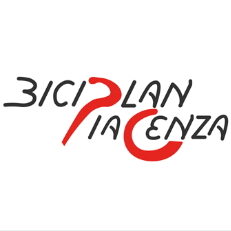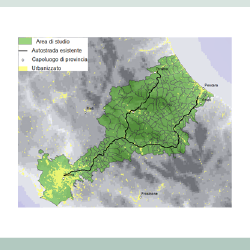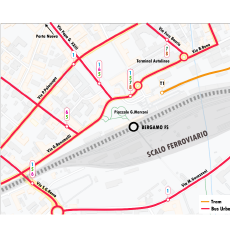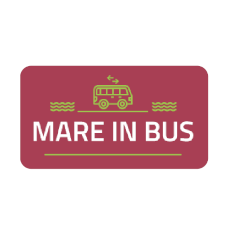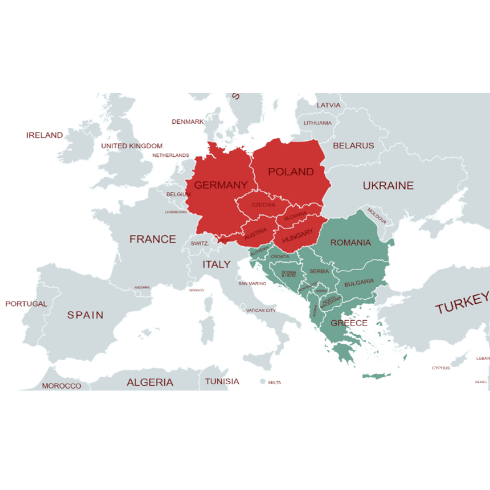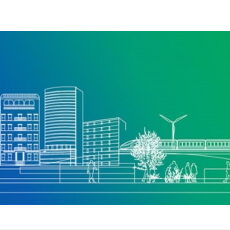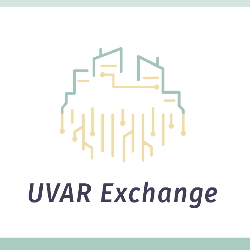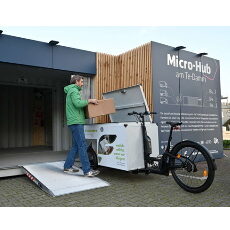- All
- African projects
- assessment
- assessment selected projects
- Assessment selected projects 2
- Assessment selected projects 3
- Assessment selected projects 4
- ASTRA
- Cost Benefit Analysis
- Electric mobility and ITS
- MOMOS
- planning
- planning selected projects
- planning selected projects 2
- planning selected projects 3
- planning selected projects 4
- planning selected projects 5
- projects
- Railways projects
- research
- research selected projects
- research selected projects 2
- research selected projects 3
- studies
- studies selected projects 1
- studies selected projects 2
- studies selected projects 3
- studies selected projects 4
- studies selected projects 5
- TRTingegneria
- TRUST
- urban mobility
- Drafting of the Biciplan, an strategic vision for cycling mobility in the city of Piacenza as part of wider mobility system introduced by the Sustainable Urban Mobility Plan (SUMP) In 2018 the Municipality of Piacenza started the process of reviewing and updating its mobility planning tools. After having elaborated the Sustainable Urban Mobility Plan and the Urban Traffic Plan, the Municipality has entrusted TRT with the drafting of the new Biciplan, that represents a deepening of the strategic vision for cycling already introduced in the approved SUMP. The Biciplan assigns a primary role to cycling with the aim to satisfy the mobility needs not only related to leisure but also (and especially) to the everyday commuting. The compact urban form of Piacenza with its orographic and climatic conditions plays in favour of a greater diffusion of cycling. Indeed 22% of residents already regularly cycle to work. The drafting of the Biciplan, started in April 2021, consists of the following activities Analysis of the local cycling mobility system and planning context with particular attention to the existing cycling network and related services, as well as the analyses of the cycling demand and road accident rates; definition of the methodology and the objectives for the prioritization of measures, also taking into account the limited resources; elaboration of the Plan proposal through the identification of policies and measures able to define the infrastructure, the services and the communication activities to encourage the use of bicycles as well as other aspects related to urban logistics and last mile deliveries. the quantification of economic resources necessary to implement all actions included in the plan and the definition of the monitoring system including indicators and targets . For more information The biciplan as a sector plan of the SUMP “Sustainable Mobility Planning in Piacenza, Italy”. Case study published by Eltis Platform
- Strada-dei-Parchi: Traffic study and cost benefit analysis of A24-A25 motorway The objective of the project was the traffic study, the cost-benefit and risk analysis of different of A24 and A25 motorways’ layout alternatives. The AIMSUN traffic simulation model was used to evaluate the impacts of the different route design variants, with special focus on travel times and accessibility. The Cost-Benefit Analysis of the alternative scenarios was combined with the sensitivity analysis of the main variables (e.g. investment costs, maintenance, etc.) and the risk analysis to evaluate the effects of uncertain variables (eg traffic demand, investment costs, incidence of weather conditions) represented with different probability distributions of occurrence. The Cost-benefit Analysis provided the economic indicators: Net Present Value – NPV and Economic Internal. Particular attention was paid to the assessment of the weather conditions impact on traffic and travel times in the various design alternatives.
- Preliminary study for the definition of development scenarios for the intermodal hub of the Porta Sud area, near the Bergamo rail station ATB Mobilità SpA assigned to the temporary association of enterprises formed by TRT Trasporti e Territorio and Policreo Società di Progettazione the contract for a study aimed at analysing the prospective structure of terminals, services, and technologies supporting the development of the intermodal hub to be build in Bergamo Porta Sud area, near the railway station. Activities included: A transport analysis, with the aim of obtaining a solid reference framework on the traffic flows (travellers and vehicles) that use and will use the intermodal hub. The evaluation of transport and environmental variables, through the application of a traffic model, allows to outline specific design considerations with the aim of guiding the development scenarios of the area. A review and analysis of international case studies relating to integrated mobility hubs, with the objective of identifying the design criteria to be followed in the design phase of the future intermodal hub in Bergamo. The development of proposals regarding scenarios that may be envisaged in the intermodal hub, with specific reference to connections and movements within the area (i.e., seamless transfers between transport terminals – urban and non-urban buses, tramways, trains, shared mobility facilities, etc.). The design of transport and architectural layouts related to the urban terminal of the existing T1 and the planned T2 tram lines, as well as of the new suburban, regional and long-distance bus terminal.
- Design and technical assistance for the implementation and tendering of a seasonal public transport service in the Municipality of Melendugno (Lecce, Italy) TRT Trasporti e Territorio Srl was commissioned by the Municipality of Melendugno to support the definition of a public transport service to be provided in the summer months connecting all the coastal marinas in its territory (Torre Specchia, San Foca, Roca Vecchia, Torre dell’Orso and Torre Sant’Andrea), as well as between the more inland areas (the town centre and the hamlet of Borgane) and the coast. The activities concerned in particular the revision of the existing daily service based on the “Mare in Bus” and “Terra-Mare in Bus” lines, as well as the preparation of the tender documents for the assignment of the service. The new service was tailored to the needs expressed in previous seasons, which in particular required an increase in the capacity of the vehicles used and faster journey times. The design of the new service included a review and verification of the stops, the inclusion of new stops and the definition of the routes and the operating schedule for both local lines. The timetables were integrated with those of the extra-urban buses connecting Otranto and Lecce. The service was successfully tested during the 2021 tourist season in order to calibrate the final bidding scheme and prepare for the subsequent multi-year tender. TRT also provided indications regarding the area’s overall mobility system, verifying the offer of parking in dedicated parking areas, on-street parking, the provision of pedestrian areas and limited traffic zones and, in particular, the impact on traffic and public transport services of the new coastal cycle/pedestrian path planned by the Municipal Administration. For more information visit visitmelendugno.com
- Definition of a strategy to exploit the potential of Greece as a gateway for logistics flows to and from Central The objective of this study is to support the Government of Greece in developing a Logistics Gateway Strategy and the related Implementation Plan to consolidate the role of Greece as maritime transhipment hub serving the international containerised traffic within the Mediterranean Sea and to pursue a transition from transhipment hub to a regional logistics gateway. The study approach is to assess and contextualize the opportunity to better position Greece’s logistics sector in order for Greece to become a more capable, more competitive and more attractive gateway linking Central Europe with international and intercontinental markets. To support the positioning of Greece, especially the port of Piraeus and Thessaloniki, the analysis develops the following steps: Quantitative mapping of the Central European Hinterland trades with a focus on south-east Asia (China) in order to understand the amount of freight traffic and the routes followed. This includes the intercontinental railway route across Asia between Europe and China. Operational mapping of the freight trades by involving relevant stakeholders (freight forwarders, intermodal operators, big retailers, etc.) mainlybased in Central Europe. The analysis provides a review of: maritime ports in Greece (Thessaloníki and Piraeus) and in Europe (Hamburg, Gdansk, Rotterdam, etc.), serving the Central European Market, freight corridors serving the Central European Market: the Pan European Corridor X and the Orient/East-Med TEN-T Corridor. In this study, TRT lead an international consortium of companies based in Greece (OPTILOG) and Austria (MC Mobility Consultants) to better cover the geographical scope of the study and with the partnership of MDST Transmodal as transport modeler expert in the container cargo shipping.
- Study on costs and benefits of the sustainable urban mobility transition The study had the objective to assess the impacts of different sustainable urban mobility transition scenarios, producing a quantitative analysis of their costs and benefits for European cities by 2030 and 2050. The calculation is based on an improvement and extension of the MOMOS model, which allows to calculate the costs and benefits of the transition through a set of indicators. To take into account differences among 779 European cities, the quantification of results has been applied to 12 city prototypes, which considered different dimensions (small, medium, and large cities) and geographic areas (southern, central/western, northern, and eastern Europe). The project considered three potential scenarios, based on a combination of policy measures taken from key EU initiatives: Promote and regulate, based on changing behaviour and promotion; Plan and build, focused on investments in technology and infrastructure; Mixed, which combines policies from the previous two scenarios. The three scenarios were built on specific combinations and applications of policy measures, belonging to six different policy groups: Shared Mobility and Demand Management; Innovative Services; Green Public Transport and Logistics Fleets & Charging Infrastructure; Pricing Schemes; Transport Infrastructure; Traffic management and control. The outputs of the study consisted in a series of indicators from three domains: transport (modal split, car ownership), environment (CO2 emissions, fatalities), and economic (city costs, revenues, and externalities). Also, a policy effectiveness comparison determined the best policy measures, in terms of associated cost/revenues and CO2 reduction, according to different city sizes. For more information: Full results of the study can be explored with this interactive tool. The study’s Full Report can be downloaded here. Additional info can also be found on the EIT Urban Mobility website For more information: New contract Interactive tool to explore results of 2021 study 2021 study’s Full Report EIT Urban Mobility website on 2021 study
- New mobility patterns in European cities The objective of the study is to provide an extensive data collection covering the areas of passenger mobility, urban logistics, fleet composition, transport activity and traffic for the EU Member States. The project is composed of three tasks: An EU-wide survey covering all mobility, including both urban and non-urban parts, based on the methodology recommended by Eurostat with a specific focus on new ways of mobility in cities (shared mobility, active mobility and use of alternative fuelled vehicles and modes). The task includes a statistical meta-analysis of similar surveys done at EU and at national, major regional and local level to derive evolution over time of mobility patterns. A targeted survey on urban logistics in the major EU urban centres, addressed at businesses that provide delivery services for own account or for hire, to understand the composition and the mileage of the fleet, the characteristics of the vehicles, the corresponding activity, the fuel/energy consumption, the Origin-Destination characteristics of the supply chain and the carbon footprint resulting from their activities in cities. A complete and consistent dataset of fleet, activity and traffic data and relevant indicators on the economic, environmental and usage aspects of transport, for the period 2005-2018, covering all road, airborne, rail and waterborne passenger and freight transport. TRT led the systematic review of existing mobility surveys in Europe, analysed the results of the passenger mobility survey (Task A), supported the activities for the urban logistics survey (Task B), and developed the rail dataset (Task C).
- User-friendly information tool on urban and regional vehicle access regulation schemes II UVAR-Exchange is the European Parliament Preparatory Action 2 (EP PA 2) contracted by DG MOVE. The project, which links to and follows the EP PA 1 (the UVARBox project in which TRT is also involved), aims to enhance the experience of road users by improving the communication of information to drivers in the vicinity of UVARs, as well as to facilitate the city’s access to information, especially of foreign vehicles and drivers, for their seamless travel and the city’s enforcement of UVARs. The project developed recommendations and guidance for EU-wide harmonised physical signs for different UVARs (use of symbols and layout of main and additional panels plus indication on road marking) and for variable message signs (VMS). Their applicability has been discussed and demonstrated in different countries including the provision of information to the vehicle via Cooperative Intelligent Transport System (C-ITS) UVAR-adapted and harmonized messages. UVAR-Exchange also addressed the cross-border sharing of vehicle and driver information, which will on one hand, allow the automatic compliance check of foreign vehicles and drivers, reducing the need for pre-registration (and related fines). The work included intensive desk research and extensive engagement with experts and stakeholders at the local, regional, national and international level (including the UNECE working group on road sign and signage), through surveys, interviews and workshops. For more information: UVAR BOX project
- Feasability study of urban freight transport, sustainable access to Reggio-Emilia historic centre The feasibility study of urban freight transport (UFT) sustainable access to Reggio-Emilia historic centre is a project contracted by Reggio Emilia Municipality. The project is underpinned by the results of the RESOLVE initiative (funded by Horizon 2020) that in the last three years, together with local administration surveys, has monitored average city centre accesses of both retailers and logistic operators. The study aims to understand the feasibility of urban consolidation centres (UCC) or micro consolidation centres (MCC) to favour last-mile sustainable operations throughout cargo bikes. This is gained by gathering a detailed level of information concerning local user necessities via online surveys and focus groups. Also, the analysis intends to evaluate the quality of infrastructure considering its compatibility with cargo bikes needs. Reggio-Emilia cyclelogistics feasibility study partly relies on local retailers and logistic operators who will be invited to join the Cyclelogistics Partnership. The joint venture is meant to define daily operative requirements as well as to form a permanent group of initiative forerunners and users. Such requirements will determine the characteristics of the consolidation centres in terms of dedicated structure (permanent, semi-permanent, temporary) and type of furniture/spaces that must consider the services offered and freights categories. The operative scheme would consist of the intermodal last-mile distribution obtained by the transhipment of parcels from heavier vehicles towards cargo bikes. Such a scheme would prevent or reduce the access of little optimised vehicles as well as polluting, harmful and space-consuming ones in the historic centre. Therefore, offering improved city centre attractivity without harming local supply needs, rather optimizing vehicles according to given spaces and offering more sustainable albeit efficient logistics operations.

